Click on the sites below and explore Marquette County!
Explore Marquette County
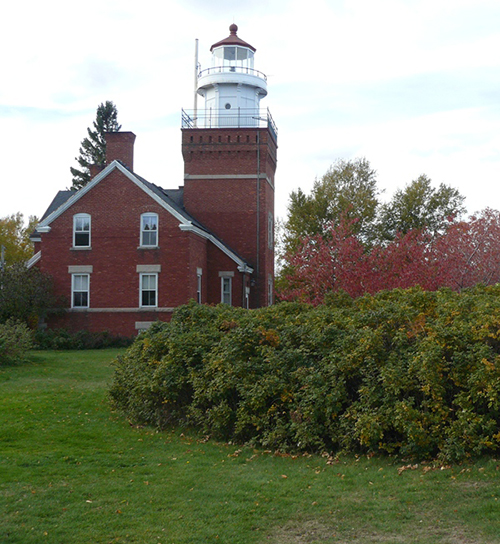
Big Bay Point Lighthouse
The Big Bay Point Lighthouse is a late nineteenth century light station facility which has remained quite intact with its original buildings and property. In 1892, the lighthouse board recommended the establishment of a lighthouse at the point because it was between the lights at Granite and Huron Island, which were invisible to each other. No light existed between them. Work on the station began in June 1896 and the light became operational on October 20, 1896. It contained a Third Order Fresnel Lens, which was in operation until the station was automated in 1941. The light was operational until 1961 when the Coast Guard built a new light elsewhere and the facility was sold. It is currently a private residence and a bed and breakfast.
Additional Information
- The Lighthouse is located at #3 Lighthouse Road, Big Bay.
Learn More
- Visit the Big Bay Point Lighthouse Bed and Breakfast website.
- View on Google Maps
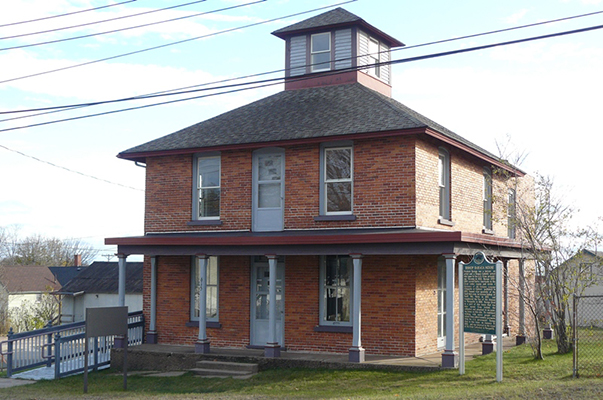
Bishop Baraga House and Tomb
The Bishop Baraga home is where Bishop Baraga lived from 1866 until he died in 1868. The house was originally a wooden frame structure that was built in 1855 at the corner of 4th and Rock Street. It was at that location that Baraga lived after the seat of the Diocese was moved to Marquette. In 1872 it was moved to its present location at the corner of Fourth and Mather Street. It was attached to a smaller existing home and a brick exterior was added. As a young man, Father Frederic Baraga traveled to Cincinnati, Ohio as a missionary in 1831. He became a missionary priest to the Ottawa and Chippewa Indians in the Great Lakes region. Baraga's first mission was where Grand Rapids is now, from 1833-1835. His mission then moved north to Lake Superior with a mission at LaPointe from 1835-1843, and L'Anse from 1843-1853. During the summer months Baraga traveled among the Native Americans on foot and by canoe. During the winter he traveled on snowshoes, giving him the nickname "Snowshoe Priest". From 1840 until his death in 1868, Baraga ministered to immigrants who were coming to the Upper Peninsula of Michigan to work in the iron and copper mines. He was named Bishop in 1853, with his area first being Sault Ste. Marie, then moving to Marquette, into this house, in 1866. That same year he dedicated a Roman Catholic parish to the community of Marquette. This building is now St. Peter Cathedral, and it houses his tomb.
Additional Information
- The Bishop Baraga House is located at 614 South Fourth Street, Marquette. The tomb is located at 311 W. Baraga Avenue, Marquette.
- The Cathedral and tomb are open all year round. The House can be viewed all year round as well. It is not open to the public.
Learn More
- Visit the Bishop Educational Center and Museum website.
- View on Google Maps
Carnegie Public Library
The Carnegie Public Library is a rectangular, one story brick structure. It was constructed in the Neo-Classical Revival style by Chicago architect John D. Chubb in 1904. The Library was a gift to the city of Ishpeming from wealthy philanthropist Andrew Carnegie.
Additional Information
- The Carnegie Public Library is located at 317 N. Main Street in Ishpeming.
- It is open all year round.
Learn More
Cliffs Shaft Mine
The Cliffs Shaft Mine site has an important place in the history of the Lake Superior and national iron mining industry and survives as the best preserved exampled of an underground iron mine on the Marquette Iron Range. It is now site of the Cliffs Shaft Mine Museum, which is run by the local non-profit historical organizations. The museum has exhibitions on the history of mining at the site and the geology of the region. The Cliffs Shaft Mine was the largest and longest-operating underground, direct-shipping, hard ore mine in the Lake Superior region and the United States, producing from 1848 to 1967. The Cliffs Shaft was the nation's largest producer of hard, specular hematite, a type of iron ore. Over twenty-six million tons were mined, and since 1887 ore was shipped every year but one. The mine was also one of the largest of Michigan iron mines, its sixty-five miles of tunnels running under most of Ishpeming and plunging to a depth of 1,358 feet.
Learn More
Jackson Mine
Located between the cities of Negaunee and Ishpeming is the most important historical site related to the development of iron ore mining in the Upper Peninsula. In September 1844, noted surveyor William A. Burt discovered massive amounts of iron ore deposits on this site. Soon prospectors came to the area, and quickly formed Jackson Mining Company in 1847 to exploit the great resources. This was beginning of the great iron ore mining era in the Upper Peninsula and from this mine grew the communities of Ishpeming, Negaunee and the shipping center for the ore, Marquette. This mine produced millions of ton of ore in the late 19th century but closed in 1924 due to low production and a greater reliance on underground mining. Today the site is abandoned, with only ruins of the original operations visible.
Additional Information
- It can be accessed Iron Ore Heritage Trail and the Old West Town trail system in Negaunee.
Learn More
- Visit the Jackson Mine Wikipedia website.
- View on Google Maps
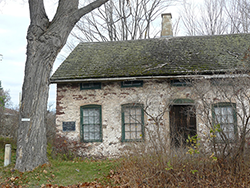
John Burt House
This structure built in 1857-58 is the oldest standing structure in the city of Marquette. It was built by John Burt, who was an early surveyor of the region and the designer and engineer of the world's first iron ore pocket dock located in Marquette. He also owned the local stone quarry from which the structures stone was taken and which was used in many of Marquette's early buildings, some of which can still be seen in downtown Marquette. This building was actually Burt's main office used during the construction of the dock and for his early surveying work. The building at one time was a museum but is now closed to the public and is owned privately.
Learn More
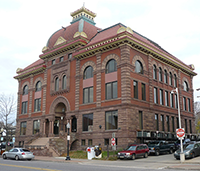
Marquette City Hall
Marquette City Hall was completed in 1894 using the plans by Marquette architects Andrew Lovejoy and Edward Demar by local contractor Emil Bruce. The building is comprised of a mixture of Richardsonian Romanesque, Second Empire, and Renaissance Revival styles. The demand for pressed bricks and sandstone created by the project was filled by local quarries and therefore employed many local workers during the depression in the 1880s. This bolstered the economy of the area and makes the building have a special importance to the people of Marquette. The top floor was also used in 1899 to house the first courses at Northern Normal School, which is now Northern Michigan University. The building is still in use by the government, though is no longer the City Hall.
Additional Information
- The Marquette City Hall is located at 204 Washington Street in Marquette.
- The building can be viewed all year round, I believe one can walk in a little, but since it is still a government building, after the foyer, that's about as far as one can go.
Learn More
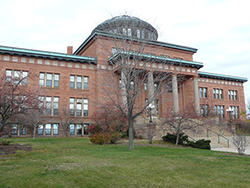
Marquette County Courthouse
Built in 1902-04 and designed by the local firm of Charlton, Gilbert and Demar, and built with local sandstone, this impressive courthouse has been an important part of the community's history for over 100 years. In 1913, it was the location of a libel suit trial between the former President Theodore Roosevelt and local newspaper publisher George Newett, who had claimed that Roosevelt was a "drunkard" in his newspaper, Iron Ore. Roosevelt, who did not drink, sued Newett and won the case. He received a financial settlement of six cents or the "price of a good newspaper." In 1959, the courthouse was again part of a major historical event, when the movie, "Anatomy of a Murder," starring Jimmy Stewart, Lee Remick and Ben Gazzara was filmed in part in the courthouse. The film was based on the Robert Traver (John Voelker) book about a trial in the same courthouse in 1952, was directed by Otto Preminger. Voelker was the defense attorney in that original trial and published the book at just before he was appointed to the Michigan Supreme Court. The book was on top of the New York Times bestseller's list for 26 weeks and the film was nominated for seven Oscars.
Additional Information
- Visitors can visit the courthouse during its open hours and are allowed in the court chambers, where much of the film was shot, when it is not in session.
Learn More
- Visit the Marquette County Courthouse Complex website.
- View on Google Maps
Suicide Bowl
In the late 19th century, the mining boom brought a large contingent of Scandinavian immigrants to Ishpeming. Among the many things they brought that enhanced the Upper Peninsula's way of life, skiing was one of the most important and has had a lasting legacy. On January 24, 1887, the Norden Ski Club was founded in Ishpeming by Norwegians in the community. On February 25, 1888, the club put on its first ski tournament with a ski scaffold consisting of snow held up by planks and bumps from which they could jump. Soon the local Finns wanted to join the club, and in 1901 it changed its name to the Ishpeming Ski Club. After using many different hills in the community for tournaments, the Club eventually leased land from the Cleveland Cliffs Company in 1925 and began building a more permanent ski jump. The first tournament was held at this site on February 26, 1926. Every year since, the Ishpeming Ski Club has held its annual ski jump meet, and other tournaments, at Suicide Hill, so named after the crash of local skier Walter "Huns" Anderson inspired a local reporter to give it this nickname. It stuck and the hill has been attracting ski jumpers from throughout the world from over 85 years. The Ishpeming Ski Club was instrumental in the development of the United States Ski and Snowboard Association.
Additional Information
- It is located on Suicide Bowl Rd, between Ishpeming and Negaunee on County Road 480.
- Suicide Hill is not open to the public on a regular basis but is used year around for practice by the members of the Ishpeming Ski Club. The best way to visit the site is to attend one of their annual tournaments. However, the ski jump itself can be viewed from the entry gate to the facility.
Learn More
- Visit the Ishpeming Ski Club website.
- View on Google Maps
